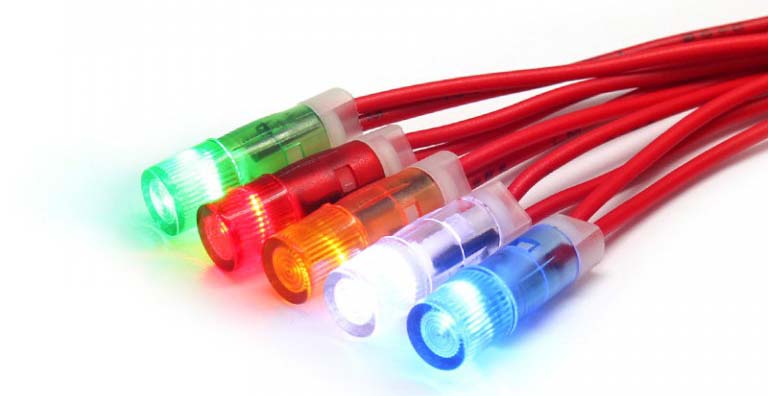
The electric characteristic parameters of LED include forward current, forward voltage, reverse current and reverse voltage. This test is generally carried out by using voltage ammeter under the condition of constant current and constant voltage source. The parameters of maximum allowable forward voltage, forward current and reverse voltage and current can be obtained by testing the electrical characteristics of LED. In addition, the optimal working electrical power value of LED can also be obtained.
It mainly includes light flux and light efficiency, light intensity and light intensity distribution characteristics and spectral parameters.
Luminous flux and luminous efficiency: there are usually two methods, the integrating sphere method and the variable Angle photometer method. Although the latter test results are the most accurate, but because of the longer time, the former is generally used. When testing with integral ball method, the measured LED can be placed in the center of the ball or on the wall of the ball. After measuring the luminous flux, the LED luminous efficiency, also known as luminous efficiency, can be measured by cooperating with the electric parameter tester.
Distribution characteristics of light intensity and light intensity: because the distribution of light intensity of LED is inconsistent, its test results vary with the test distance and the size of the detector aperture, so that each LED can be tested and evaluated under the same conditions, so that the results are more accurate.
Spectral parameters: mainly include peak emission wavelength, spectral radiation bandwidth and spectral power distribution. The spectral characteristics of LED can be represented by the spectral power distribution, through which the chromaticity parameters can also be obtained. The measurement of general spectral power distribution needs to be carried out by spectrophotometry, and the monochromatic light in the mixed light is distinguished one by one for measurement.
It refers to the characteristics of LED light, electricity and color changes at the moment of power on and power off. Through this test, the working state and material properties of LED can be obtained at the moment of power on and off, so as to understand the loss of LED caused by power on and off.
The main color coordinates, the main wavelength, color purity, color temperature and color development, etc., the test methods are spectrophotometry and integral method.
Spectrophotometry: the power distribution of LED spectrum is measured by monochromator spectrophotometer, and the corresponding chromaticity parameters are obtained by integrating chromaticity weighting function.
Integration method: the chromaticity parameters are directly measured by the special filter and photodetector.
Also refers to thermal resistance and junction temperature. Thermal resistance refers to the ratio of the temperature difference along the thermal flow path to the power dissipated on the channel. Junction temperature refers to the PN junction temperature of the LED. There are two methods to test the junction temperature of LED. One is to measure the surface temperature of LED chip by using infrared temperature measuring microscope or miniature thermocouple. The other is to determine the junction temperature of LED by determining the relationship between the forward bias of current and the inverse ratio of junction temperature.
Tel: +86-021-33555507
Email: [email protected]
Add: No.655 Jiujing Road, Songjiang District Shanghai, China, 201615